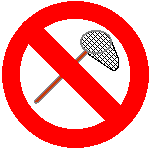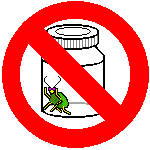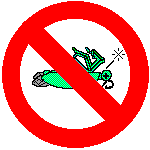
| ARTHROPODA - HOME |
On describing an activity entirely managed with a most peculiar fancy, like photo-hunting Arthropods is, we must face two risks – the first is unjustified self-celebration, and the second is boring the reader. As there isn’t much that we can do about the second risk, about the former let us reassure the reader, if any, that by describing and stressing the peculiarities of our endeavour we don’t aim at extolling our unproven talents as photographers and natural historians, but rather at informing interested agencies, firms and people of the exact nature of the photographic library about Emilia Romagna’s biodiversity that we have been putting together in an effort that – even putting aesthetical evaluations apart – we regard as deserving notoriety.
First of all, I want to state that before me, and then along with me, constantly worked Dr. Piero Fariselli: he has been my initiator to natural macrophotography, and his own collection is strictly comparable to mine, both in quantity and quality of images, even though their exact number is not presently available on digital support – sure they will be in a near future. About ethics and equipment, we are perfectly aligned, and this document exactly describes both mine and his collection. About different species represented in our collection – we roughly evaluate in about 80% the overlap. Thus, I have no photographs of about 20% of the species in Fariselli’s collection, and vice versa. When we work in pair, while exploring the same area we keep at voice range and we excange notice of everything interesting. But in many occasions each one worked by himself, so that some places have been visited by just one of us. In particular, the huge number of slides I have made in the area of Corno Alle Scale Regional Park has no correspondence in Piero’s collection, and the same applies to my collection when opposed to the great deal of pictures taken by Piero in the Calanchi dell’Abbadessa Regional Park.
Broadly speaking, our activity concentrated in the Province of Bologna, with many pictures taken in the bordering Provinces of Modena and Ferrara, and some short visit to Sardinia. Anyway, the Bolognese hill and mountain zone is by far the most represented.
The beginning of our Naturalistic Macrophotography
I was involved in macrophotography by Piero Fariselli at the end of 1991 (he had already been doing macros for some years before). Until that period, as many autodidacts, I had taken pictures without any particular trend apart a liking for landscapes. Having experienced Tamron and Pentax Macro-zoom lenses, I immediately understood that Piero had undertook the only sound technical approach to the problem: since then I always conformed to his technical choices.
At the beginning of 1992 I equipped my camera (a Pentax Super-A) with a Tamron 100 mm Macro 1:2 lens, with extension tube for the 1:1 reproduction ratio, and I handcrafted a support for the proper positioning of two Nissin flashes (Guide number =18). Eager to emulate the accomplishments of my friend Piero, soon did I adopt the same lens, a Kiron 105 f 2,8 Macro 1:1, and then the same camera, a Pentax K1000, and finally (after an interlude with an annular flash) the same flash system, a Metz Mecablitz 30B3 with double flash mounted on the front barrel by means of on a Cokin annular holder.
The only time I anticipated Piero was when I bought an extension tube to obtain a 2:1 enlargement ratio. Piero followed, and now the only item distinguishing our equipment is my pistol-butt Rowi handle. I spent many years using Kodak EPR 64 Film, an old but almost unreplaceable emulsion. Then I re-discovered Kodachrome 64, that I presently regard as the non plus ultra, despite the necessity of sending it in Switzerland for development. Piero uses 100 ASA films of more recent conception.
The equipment is thus based on entirely mechanical cameras (even at the time of Super-A I didn’t take advantage of automatic exposure modes). We never made use of dedicated or TTL flashes, or any particular electronic device.
Calibration was performed directly on the field and, in my case, on a self-made test bench I used at every modification of my equipment. In particular, I empirically determined the maximum depth of field (or better the minimum lens opening) available with the different film sensitivities at the different reproduction ratios (obviously, these values are depending upon the flash power). We always used the suggested flash time of our cameras (1/125" for the Super-A, 1/60" for the K-1000) and presently I refer to this simplest table, referred to a 64 ASA sensitivity:
Reproduction Ratio Aperture
1:2---------------------- 22
1:1--------------------- 32/22
2:1--------------------- 22/16
This table, expression of the weighed average of many tests, prevents the most common errors, and anyway must be interpreted with a grain of salt in particular conditions (a subject on a flat, light coloured background requires closing the lens further, while subjects with no background, like spiders suspended to a silk thread, require a slightly wider opening). So, broadly speaking, both the equipment (with a cost of less than 2.000.000 Lire, 1100 Euro) and the modus operandi are very far from technological excellence or from a recommendable practice of photographic technique. As one will see, there are also many other factor negatively influencing the possibility of obtaining good shots: essentially, our shunning the tricks of the trade, and our compliance with the ethical code that follows.
After some initial hesitation, I decided to fully and freely comply with the ethical code based on the following principles, in agreement with Fariselli who originally proposed the core concepts of this code of behaviour. We define our methodology as Low Environmental Impact Macrophotography (LEIM), a passive and non-intrusive approach to the documentation of Arthropod diversity. The underlaying concept is "to cause the least possible damage to the photographed subject and to the surrounding environment", in the light of the fact that LEIM itself – careful as it may be - is an heavy interference with the natural life course of the subject: rare exceptions apart, Arthropod senses are keen enough to perceive the photographer nearing, let alone the shock of the sudden flash.

So, not capturing the subject in any case is our first principle. The only possible exception relates with the occasions in which we found Arthropods that got into houses by chance, and/or house-dwelling arthropods whose survival was endangered. Only in this cases we forcibly transferred the subjects in more proper places, taking a picture before the capture or after the release.

Likewise, the photographed subject were never enclosed or retained (apart from the exceptional context mentioned above) and this "non-interference" was expressed in a particular care for avoiding that predator Arthropods lost their prey, or that mating was interrupted because of the picture taken.

Our photographs were never made under controlled conditions or using enclosures like terrariums in studio conditions. I admit with no hesitation that in windy weather the photographer itself or his colleague has held a branch or a leave of grass steady, or has kept a leaf turned. This is the maximum degree of interference that we allowed ourselves. Informal "light traps" were exploited, like the external lighting of the house in Madonna dell’Acero, to photograph in the early morning Moths and other Arthropods attracted during the night. We never expressly set up dedicated light traps.

We happened to get a picture of uncommon Arthropods found dead. These photographs are not regarded as a "publishable" part of our collections. With the same principle, any subjects who shams dead is considered as really dead, as this behavior ("thanatosis") is the symptom of an heavy disturb perceived by the subject, a situation we consider as a main failure of ours. As one can imagine, we shunned narcotizing or – even worse – decerebrating Arthropods: these stratagems are much more diffused than commonly thought in professional macrophotography, with the notable exception of Mark Moffet of National Geographic Magazine.

After the picture has been taken, and in the subsequent digitalization via scanner of those images that I use in prototype CD-ROMS to divulgate LEIM activity, no computer graphics filter or retouch technique is applied, with the only exception of automated controls of the digitalization process (automatic exposure, auto white point, auto black point, film-calibrated cast removal), as these features are not intended for modifying the original image, but rather for obtaining a digitalized result more faithful to the original.
By the way, we never applied filters to the lenses of our cameras.
The rationale of our activity is collecting an adequate documentation of the Arthropod species with which we fall in while going through the territories we explore. We never set up "combings" with intrusive, active searching, substrate removal, branch twisting - the usual enthomological practice (sweeping to and fro through the vegetation, netting free-flying insects, light-trapping) is drastically conflicting with the LEIM philosophy. We limited our activity to the painstaking observation of the areas boarding country roads and paths, and entering on occasions – always asking for an authorization – terrains of public or private property, cultivated or not. All of this, without any particular systematicity.
The non-exhasperated character of our search is the expression of one of our main background objectives: demonstrating that even a superficial, passive observation puts us face to face with the living evidence of an unsuspected local biodiversity, another demonstration of the fact that, contrary to current opinions, our nature isn’t at all "less precious" or "more expendable" of the tropical one. Far beyond personal gratification, then, we want to put together something that can help improving environmental awareness in our fellow-countrymen. We are not directly interested in making money out of our collections, but rather we would like to let our images be seen by the widest possible audience, as a supporting medium for our environmental awareness message.
By now (August 2000) the images of our collections were "commercially" used only when I provided five pictures to the Centro Villa Ghigi for an information panel in the Visitor Center of the Corno alle Scale Regional Park. About popularization, the only official occasions were in August 1997, when the Commune of Castel d’Aiano (Bologna Province) commissioned to me a slide projection for the summer vacationers, and in September 1998, when we were hosted at the "Conference for the Protection of Lesser Fauna" (Convegno sulla Tutela della Fauna Minore) by the Centro Agricoltura Ambiente (Center for Agriculture and Environment) of the Bologna Province. Another slide projection was commissioned by the Commune of Castello d'Argile in May 2000.The computer demonstrations relative to digitalized images, prototype electronic book and database about our collection promoted a great interest in some officiers of our regional natural conservation agencies, even though no practical consequences for a better exploitation of our collection followed. Simply put, the quality and the complete naturality of our images has greatly impressed everyone who took the trouble of paying a little attention to us. Among the technically qualified persons who expressed satisfaction about our photography are the noted photographer Dr. Ivano Adversi of the Centro Antartide in Bologna, and Paolo Cortesi, winner of international prizes in nature photography.
Among the proposals of exploitation of the collection made with no result:
- Publishing a picture card collection (proposed to Gruppo Editoriale Panini of Modena)
- Publishing a thematic book: "600 Arthropods of Emilia Romagna" (proposed to CALDERINI-EDAGRICOLE of Bologna)
- Publishing general popularization articles about Arthropods (proposed to the Agricultural Popularization Center of the Bologna Province)
The availability of our collections has been announced to:
With Fariselli we evaluated the opportunity of publishing a book or a CD-ROM at our own expense, but after a thorough evaluation we have been discouraged by the costs involved: we would need the collaboration of some public body or of some corporate sponsor to make the thing possible.
My collection is structured, organized, and ordered. Each and every slide is labelled according to the format shown below. We keep the slides at our homes in suitable slide cases, and my collection presently (February 2005) contains 3135 slides representing at least 1363 Arthropod species. Among them, 410 (relative to 340 different species) were not determinable at generic level, and another 290 (relative to 144 different species) were determined at generic – but not at specific - level. As mentioned above, the exact numbers for Piero Fariselli’s collection are not presently available, but my colleague has more or less as many photos as me, and has encountered many species that I had never the opportunity of photographing.
As an information technology professional, I managed my collection by computer since its beginning. I devised specific programming techniques for the management of Linnean taxonomy, as well as algorithms and database structures for the packed representation of Linnean hierarchies. The resulting software is fit for the management of every collection with a zoological or paleontological subject. The last release of this software (born under Microsoft DOS environment) operates under Microsoft Windows NT and Microsoft Windows 95, and was developed with Borland Visual dBase 7. The software package articulates on three executables, that allow for the fast input and edit of the slide data, as well as for the generation of slide labels and reports, among which:
Queries by combined criteria are available: all provide hierarchical nesting, so that the research can be performed by any Linnean grouping. Research criteria can be freely combined. Among the possibilities, geographical locality search, determination precision search, date interval search.
All the reports are generated in A4 format, whereas the 0.5"x1.75" labels are printed in the following style:

On each label, to be manually sticked on the slide’s frame, the identification code (letters representing the order, and a sequential number) is printed in the top row, followed by an "S" for sure determinations or "N" for uncertain determinations, the bibliographic reference used for the determination, a qualitative evaluation and an asterisk marking the photos that – according to my personal evaluation – rank as excellent. In the second row the systematic position is printed, while in the third the Linnean binomial appears, followed by the first charachters in the name of the locality where the picture was taken.
Not considering the excursion planning and the travel time, once on the field (that may also mean "immediately outside my house") shooting a single slide can require from 5’ to 40’, with an average of 15’. After processing, determination requires the following steps (times are given for 36 slides):
Phase 1 – At the lightboard (80’)
Slides are positioned on the lightboard and are subject to a preliminary aesthetical evaluation, following which they are (fortunately seldom) discarded or put in columns divided according to linnean orders. (10’)
Order by order, the first available sequential number within each order is read from a written module. The identification code is manually written on the slide frame with a permanent marker. The module is then updated. (10’)
Slide by slide, with the use of a lens and by comparation with the available bibliography (see Appendix A) each subject is determined. If necessary, the slide is compared with similar, already determined images in the collection. Identification code and respective determination are written on a suitable module, covering the slides and also containing the locality and the aesthetical evaluation. (60’)
Phase 2 – At the slide projector (30’)
With the presence of Piero Fariselli, slides are projected and determination is discussed, by cross-referencing our books. The covering module in consequently updated. (30’)
Phase 3 – Data Input on the Computer (35’)
With the covering module at hand, one proceeds with data input. After the preliminar operation of adding the new taxa to the taxonomic hierarchical archive, slide data are input. A control report is issued with the data input or edited in the current date. (35’)
Phase 4 – Label Setup and Printing (5’)
The label printing program is run. Label sheets are fed manually into the printer. (5")
Phase 5 – The slides are labeled and positioned in their case (30’)
The printed lables are sticked on the corresponding slides’ frames, then each slide is positioned in the proper place of the case corresponding to the taxonomic order in which it belongs. If a new family appears for the first time, the respective cardboard separator is prepared and positioned in the case. (35’)
Total shooting and classification time = 20’ per slide
Not considering the duration of travel, the subsequent reclassifications following the availability of new reference books, and the periodical general revision of all the slide containers, the bare sum of the times given above is 720’ for 36 slides, that is, 20’ per slide.
Total duration of accessory activities =2,5’ per slide
If we take into account the times for setting up and properly storing the photographic equipment, average travel time to and from the explored area, the times to and from the photographer’s shop for the processing of slides and/or the time to and from the post office for sending the Kodachrome film to its development site, and excluding extremes like the pictures taken in our own garden and the ones taken in Sardinia, we can state that the sum of these accessory activities amounts to an average 90’ for every 36 slides, corresponding to 2,5’ per slide.
How much did we spend? 50.000 Lire (25,8 Euro) per slide!
From the first viewpoint, the value that Fariselli and I give to our time while practicing photographic activity, taking into account the naturalistic and technical skills we have developed on the field, cannot be less than the average cost of any other highly skilled professional activity, namely 100.000 Lire (a little more than 50 Euro) per hour excluding VAT. At 22,5’ per slide, we can talk about a labour cost of 44.500 Lire (about 23 Euro) per slide, VAT included.
Coming to the film cost: a roll of Kodachrome 64 is around 21.000 Lire + about 6.000 lire of special delivery postage, totaling 27.000 lire (about 14 Euro), corresponding to 750 lire (approximately 0,4 Euro).
A detailed list of motor vehicle and archival costs (comprising items like the expenses related with the computerized management of the collection, of the reference books, of the monetary value of the physical storage space, electricity and stationery) is outside the scope of this approximate evaluation. We can talk about a cost approximating 50.000 Lire (25,8 Euro) for 36 slides, about 1400 Lire (0,8 Euro) per slide. Without going in further depth, we can state that if we would sell a slide at less than 50.000 Lire (25 Euro), we would be running at loss. (This analysis was made just for curiosity sake – we don’t aim at selling our slides!)
How much would it cost to have it made by a professional photographer? Not less than the double!
This conclusion is only apparently hasty, as it is based on the following observations:
As illustrated above, if we should insure our collections, we should do it for not less than 50.000 lire per slide. But monetary value (by the way, an issue that we consider questionable and somehow meaningless) isn’t the only thing, on the contrary it’s surely the least important point.
Exploring some areas of our regional territories with painstaking care and in compliance with a strict biophilic ethical code has allowed us to document Arthropod diversity, or at least the tip of the iceberg represented by the species we met. We don’t know about any other initiative like this: this doesn’t necessarily mean that there is none, but points to a visibility problem of private endeavours like ours. Maybe other people are writing relations like this right now …
While trying to define some form of collaboration with the Centro Agricoltura Ambiente of the Bologna Province, Fariselli and I are still looking – not necessarily for profit – for some agency with a cultural and/or scientific scope who recognizes the potential of our collections in terms of documentation, popularization, ethics and, why not?, entertainment. In fact, we regard as very high the simple aesthetical value in shapes and colours of the organisms that we have so often met, and this value leads us into thinking that a proper reference for the exploitment of our images should be a big firm in the fields of design or of fabric production.
If some reader – if any – who had the patience of reading this all is needing any further information about our activity, we hope that he will not hesitate to contact us. We would be very glad if he could come and see – or ask us to bring him and illustrate – some sample of what I have been so diffusely writing about.
Here are our e-mail addresses:
 (Cesare Brizio),
(Cesare Brizio),
and our telephone numbers:
From year to year, new titles are added to our consistent reference library, whose majority is owned by Piero Fariselli. The fact that a significant part of it is made by foreign (not Italian) publications does not derive from a form of esterophily, but rather becomes an unavoidable choice because of the lack of illustrated fields guide in Italian. We hope that we will be able to overcome this problem by writing a book by ourselves! The main problem we always faced is the gap separing the most popular publication, with very sparse and often poor illustrations, from the truly specialistic stuff, books made for people who is dissecting the insect under a microscope (as the only way to resolve determination problem is the direct examination of the sexual apparatus). Both these kinds of publication are lacking pictures like ours. Only foreign books bridge the gap: in particular the world-noted british attention to natural subjects has produced very useful field guides like Chinery’s books about Insects and Jones’ about Spiders, very rich in illustrations and perfectly fit for mesoscopic identification on the field (or on the slide …). Oddly enough, the most useful italian title was the 1898 book of Griffini’s thanks to the excellent quality of its chromolithographic tables. Other very useful texts – apart from the obstacle of German language, that we both ignore – are the books in the Sauers Naturführer Series, with their small size excellent quality pictures. The following list is referred to the situation in January 1999. We omitted the titles of several magazines that we from time to time take advantage of: for example, the periodic "Il Divulgatore" issued by the Centro Agricoltura Ambiente ot the Bologna Province resulted very useful in may occasions. The same applies to thematic special issues of environment-related magazines.
Since a very early age I spent my vacations in a mountain house my family had at disposal in Madonna dell’Acero. As a macrophotographer, I concentrated my attentions on the great wealth of natural resources typical of this wilderness area, with particular reference to the Dardagna valley. Immediatly along the western border of the map above, the Pratignano Lake zone is another interesting and most rich biotope, where I took many interesting pictures. Presently, 1155 slides, representative of 555 different species, are referrable to the Park and its surroundings, and this count will surely be constantly increasing in the next years. The particular ecocompatible ethics I have always been complying with gets a particular significance within a protected area, needing particular respect as well as documentation. I hope that the Corno alle Scale or some other Regional Park will be the institution to fully understand and exploit the popularization and the scientifical potential of our collections.
N.B.: Also Piero Fariselli took pictures in Madonna dell’ Acero and in the neighbouring areas, even though for a much smaller amount of slides. Another Regional Park much more extensively cobvered by Fariselli than by Brizio is the "Gessi Bolognesi e Calanchi dell’ Abbadessa" Regional Park. The respective residence areas of Castel d’Aiano and Castello d’Argile were also thoroughly explored and very adequately represented in our collections.
| ARTHROPODA - HOME |